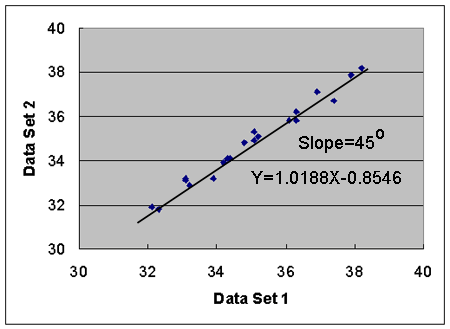|
 A design may be developed by using
anthropometric data from tables, with the necessary corrections, and
sometimes a very satisfactory result can be obtained. However,
dimensions interact in real situations so some form of dynamic test of a
design is highly desirable. There are software packages available that
will permit some degree of dynamic testing or simulation, including, for
example, exploring the field of view, testing maintenance procedures or
interactions between users. Users with a variety of anthropometric
characteristics can be tested by using different percentile values in a
simulation. Computer simulation or physical mockups should be used to
test designs in order to examine the complex interactions between
dimensions that occur in the use of equipment and performance of tasks.
As far as possible the people used in tests with mockups should include
some with body dimensions that represent the extremes used as design
limits in arriving at the design being tested. In practice this is not
always possible, so computer simulation models are a very attractive
option and will become increasingly sophisticated and popular. It must
be remembered though, that computer models are still limited by the lack
of availability of anthropometric data for many populations of users.
Tests using a mockup are called ¡¥fitting trials¡¦ and the general idea is
to provide adjustment to the important dimensions of the design mockup
so that a sample of users can try out each dimension at different
settings and say whether it is just right or too high/large or too
low/small. The ¡¥method of limits¡¦ is a convenient and systematic way to
perform fitting trials. The setting is started in a position that is far
too high/large (or far too low/small) and then adjusted in small steps
until the person thinks that it is ¡¥acceptable¡¦, then ¡¥just right¡¦ and
then ¡¥too low/small¡¦ (high/large). This process may be repeated making
adjustments from too small to too large (or vice versa) and then from
too large to too small as many times as circumstances dictate and for as
large a sample as practical. In this way a good idea of the range of
settings that are acceptable to the population can be obtained. Fitting
trials are especially useful for populations for which there may not be
much detailed data available, like pregnant women, the elderly, or
children. Both structural (static) and functional (dynamic)
anthropometric data have applications in the design of facilities and
things people use. The data to be used should be reasonably
representative of the population that would use the item. When items are
designed for specific groups, the data should be specific for such
groups in the country and culture in question. A design may be developed by using
anthropometric data from tables, with the necessary corrections, and
sometimes a very satisfactory result can be obtained. However,
dimensions interact in real situations so some form of dynamic test of a
design is highly desirable. There are software packages available that
will permit some degree of dynamic testing or simulation, including, for
example, exploring the field of view, testing maintenance procedures or
interactions between users. Users with a variety of anthropometric
characteristics can be tested by using different percentile values in a
simulation. Computer simulation or physical mockups should be used to
test designs in order to examine the complex interactions between
dimensions that occur in the use of equipment and performance of tasks.
As far as possible the people used in tests with mockups should include
some with body dimensions that represent the extremes used as design
limits in arriving at the design being tested. In practice this is not
always possible, so computer simulation models are a very attractive
option and will become increasingly sophisticated and popular. It must
be remembered though, that computer models are still limited by the lack
of availability of anthropometric data for many populations of users.
Tests using a mockup are called ¡¥fitting trials¡¦ and the general idea is
to provide adjustment to the important dimensions of the design mockup
so that a sample of users can try out each dimension at different
settings and say whether it is just right or too high/large or too
low/small. The ¡¥method of limits¡¦ is a convenient and systematic way to
perform fitting trials. The setting is started in a position that is far
too high/large (or far too low/small) and then adjusted in small steps
until the person thinks that it is ¡¥acceptable¡¦, then ¡¥just right¡¦ and
then ¡¥too low/small¡¦ (high/large). This process may be repeated making
adjustments from too small to too large (or vice versa) and then from
too large to too small as many times as circumstances dictate and for as
large a sample as practical. In this way a good idea of the range of
settings that are acceptable to the population can be obtained. Fitting
trials are especially useful for populations for which there may not be
much detailed data available, like pregnant women, the elderly, or
children. Both structural (static) and functional (dynamic)
anthropometric data have applications in the design of facilities and
things people use. The data to be used should be reasonably
representative of the population that would use the item. When items are
designed for specific groups, the data should be specific for such
groups in the country and culture in question. |

